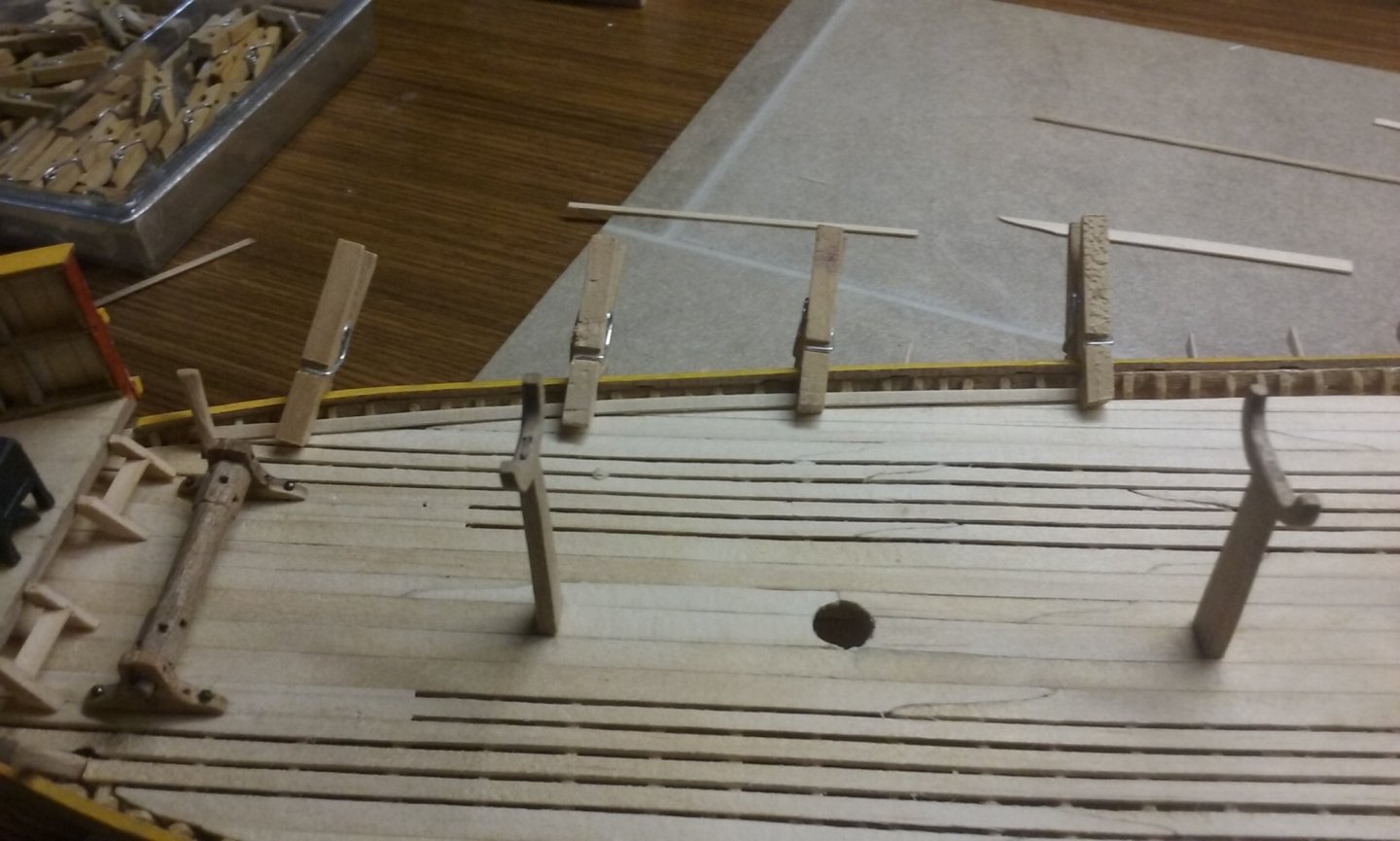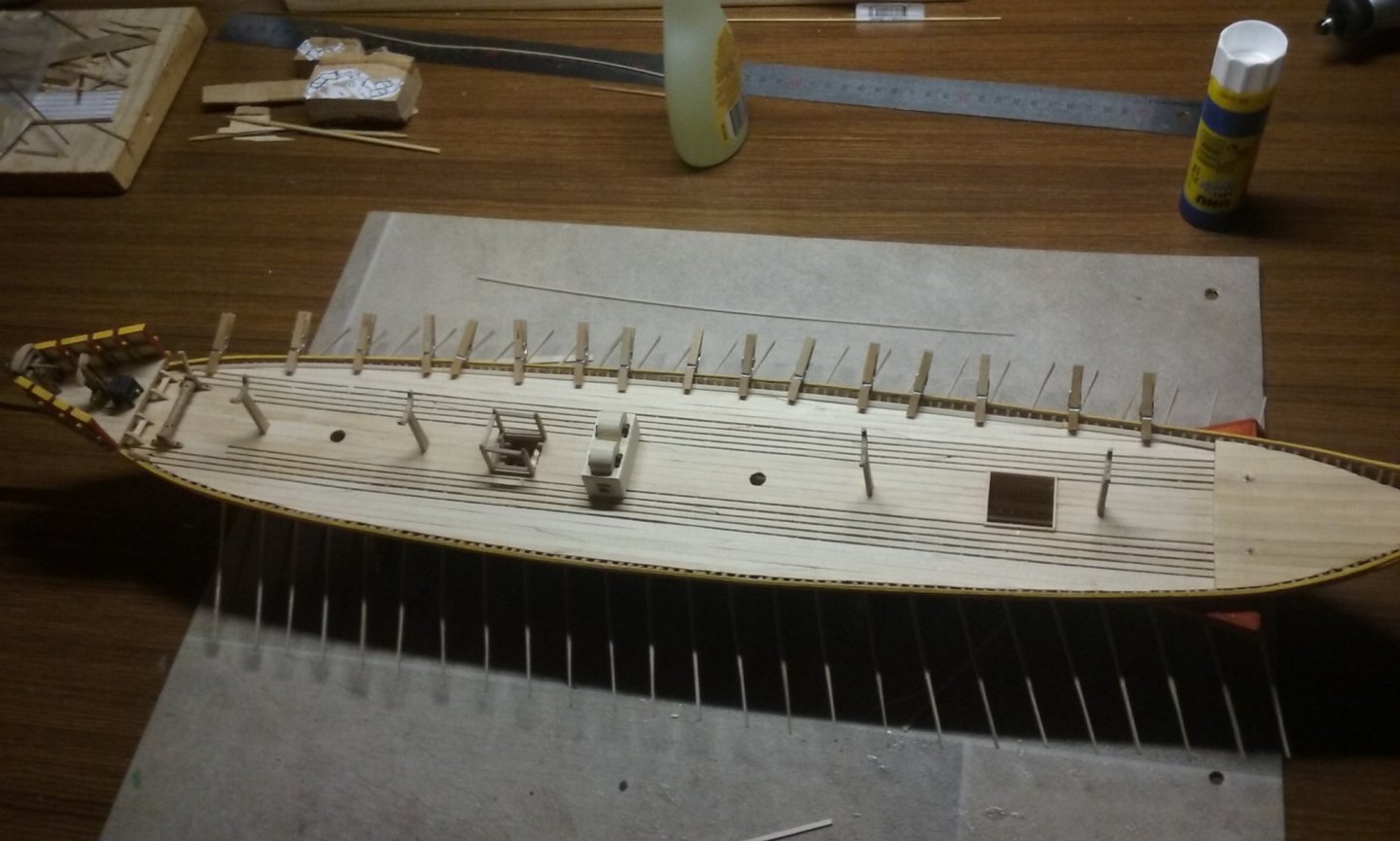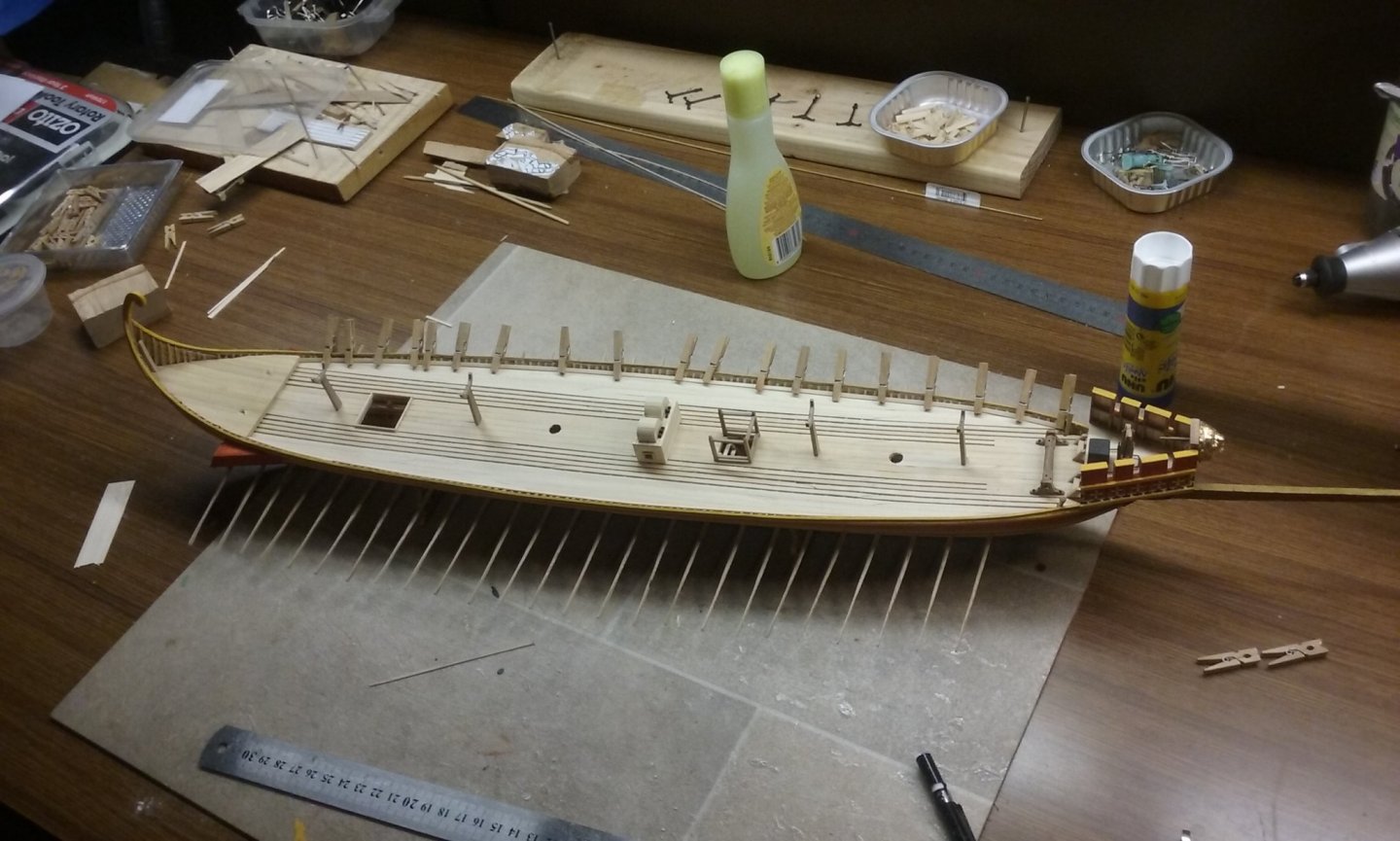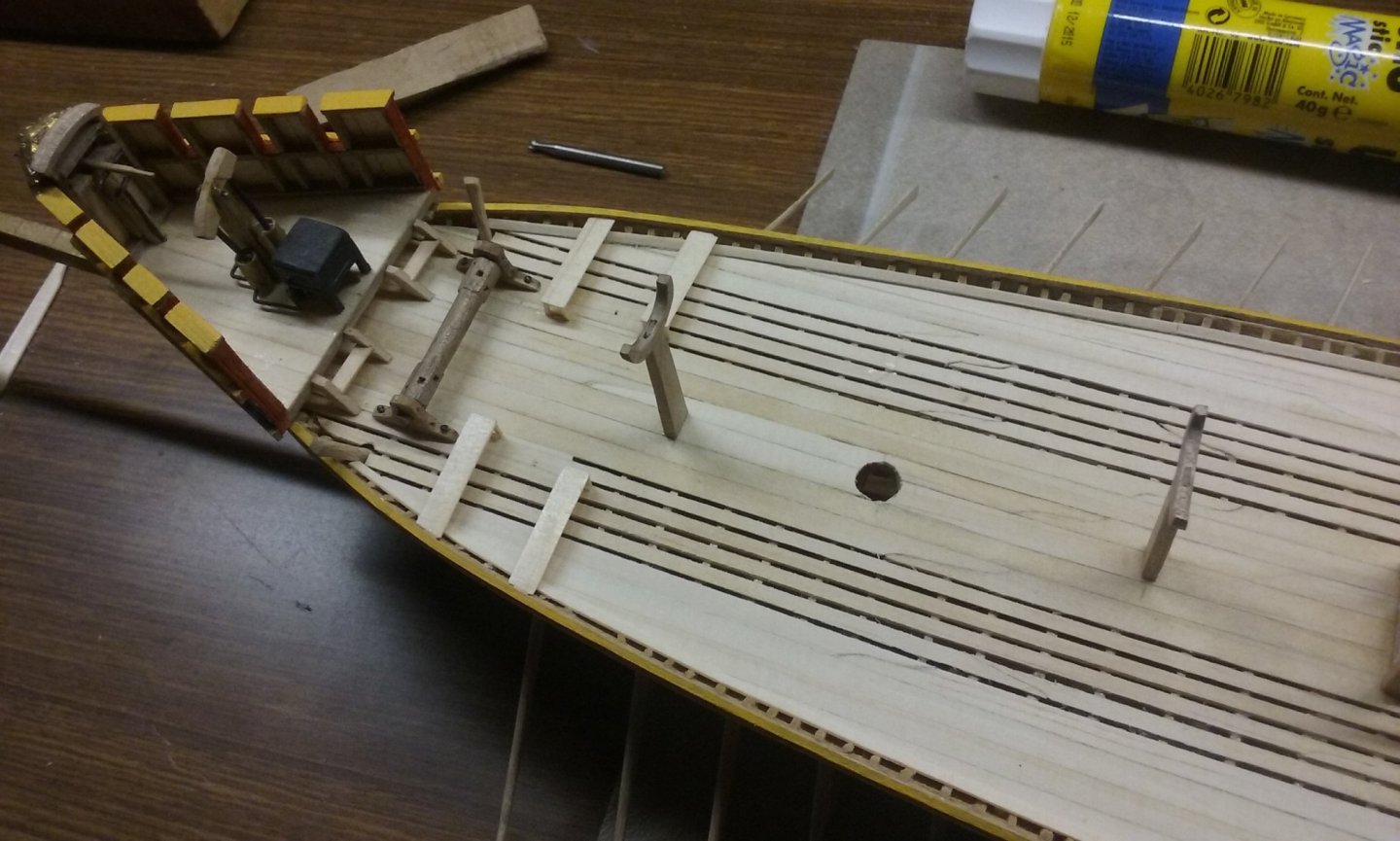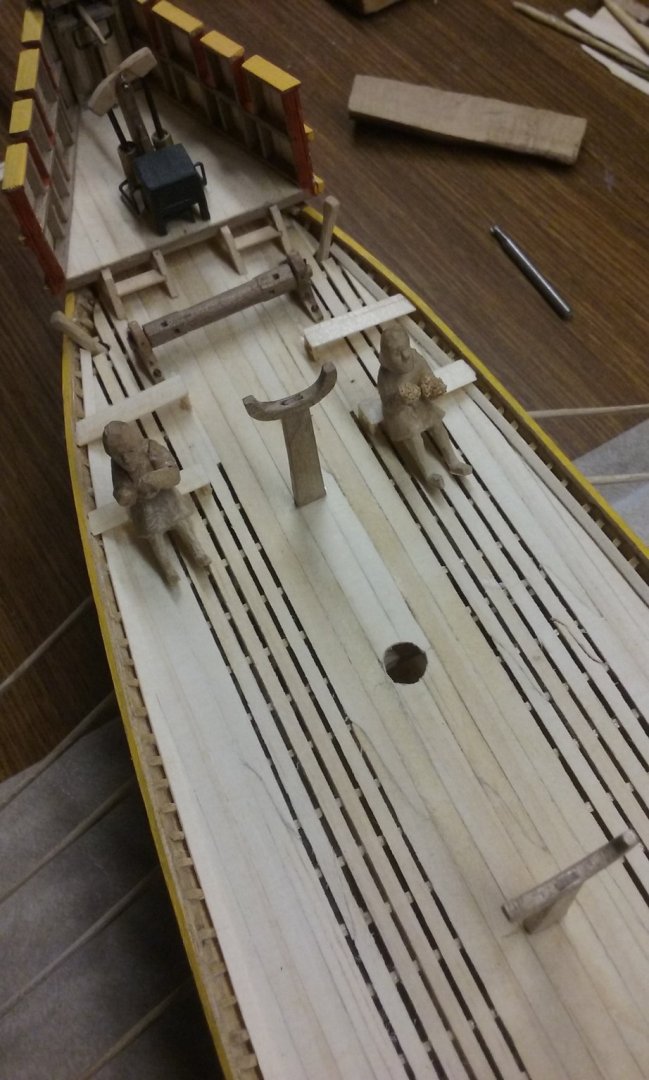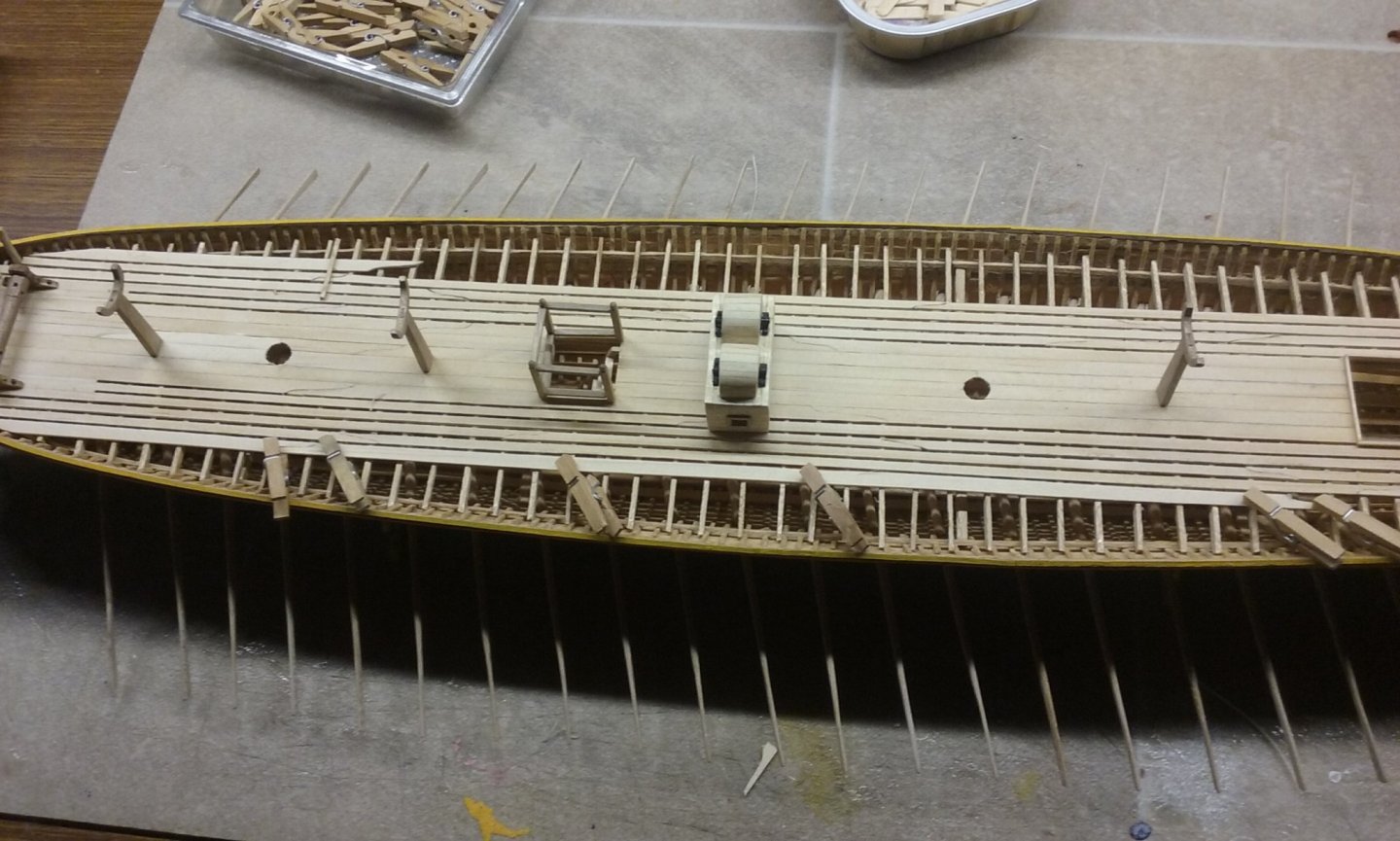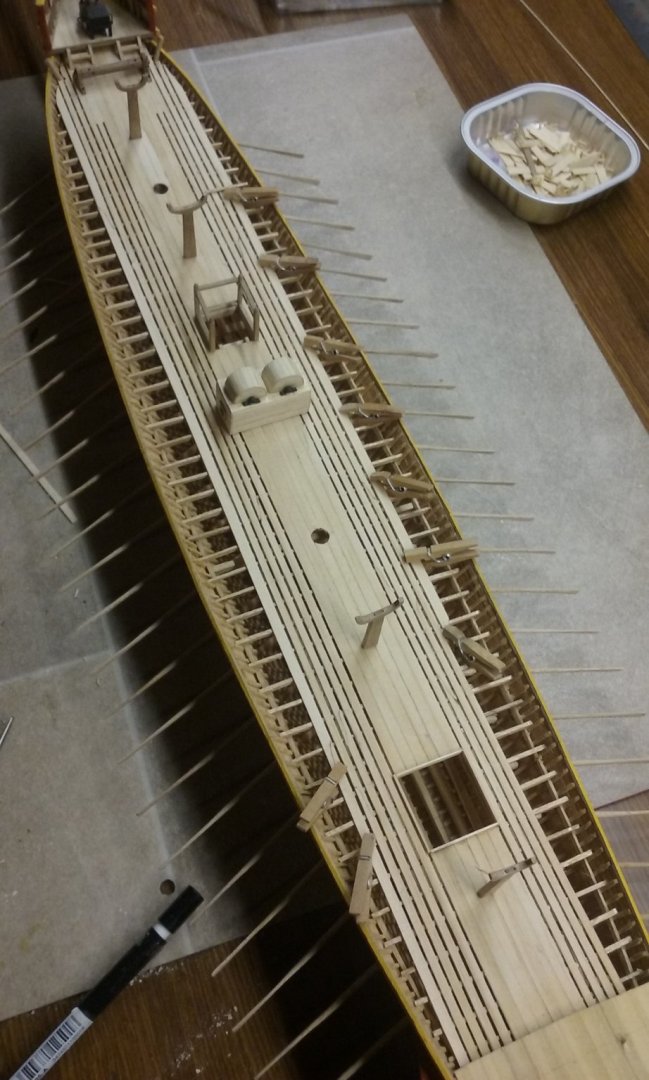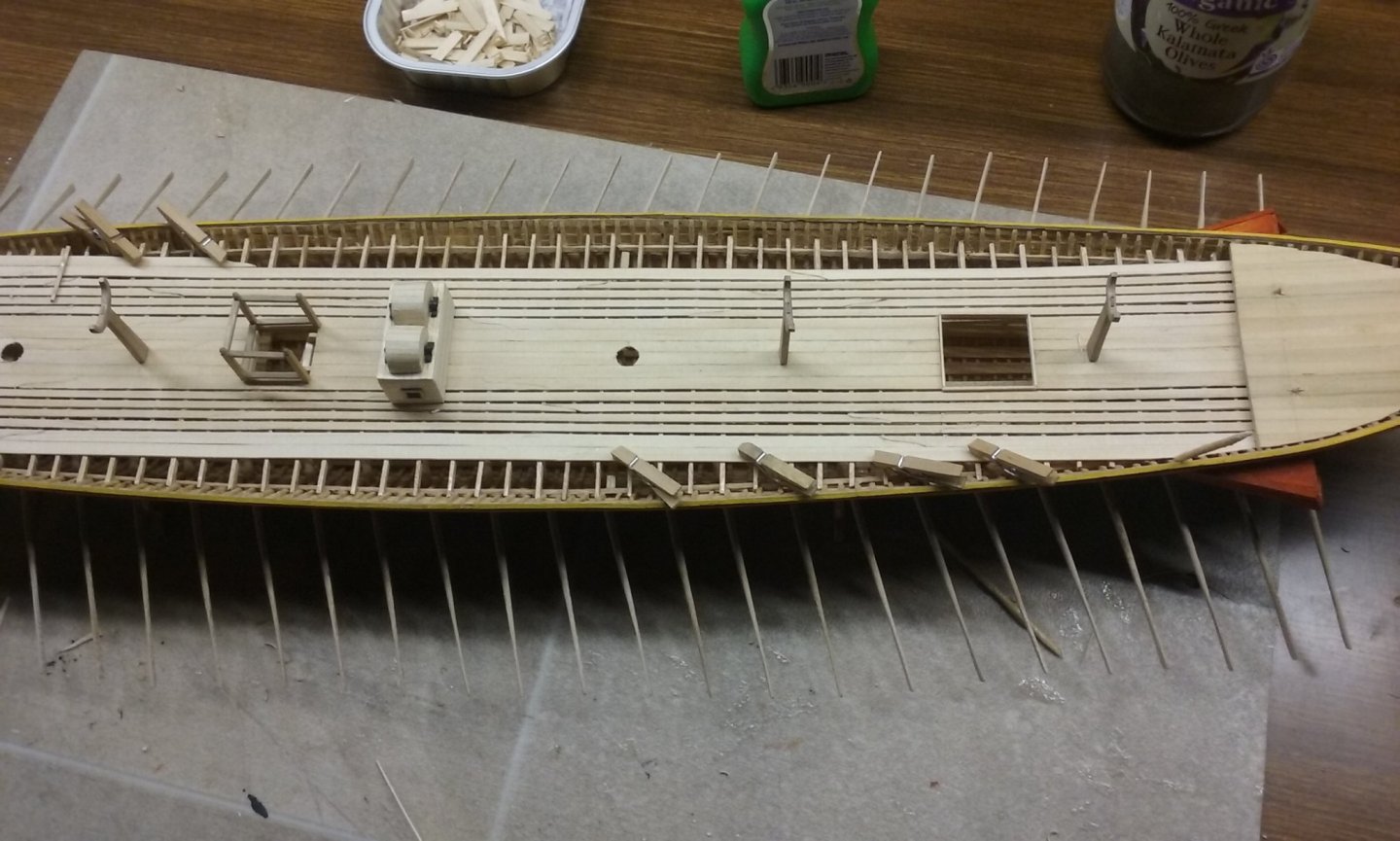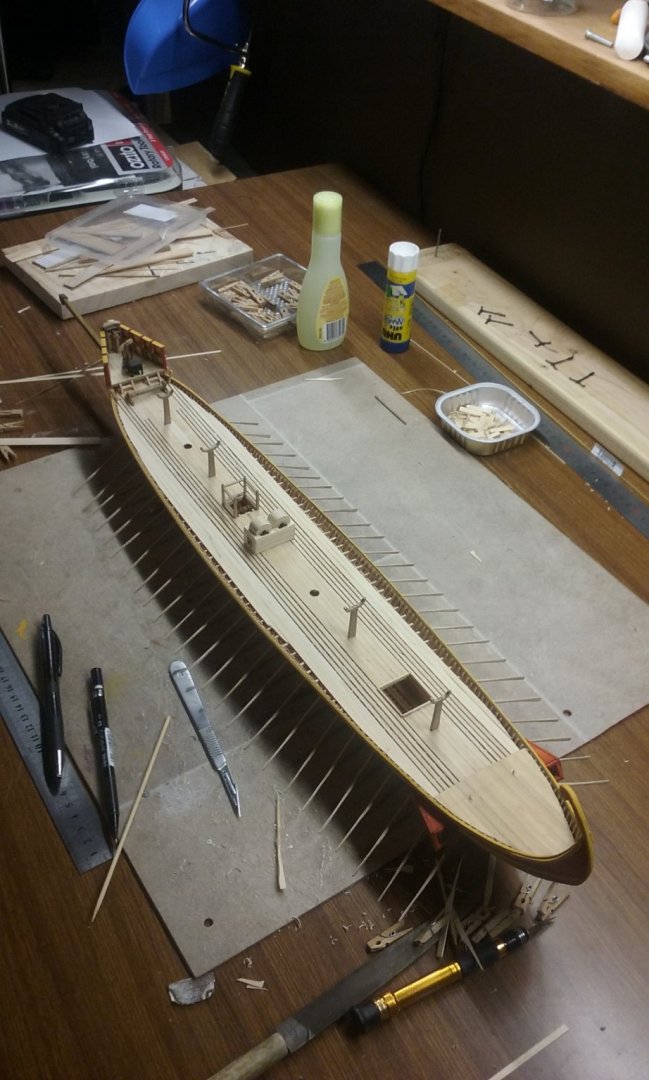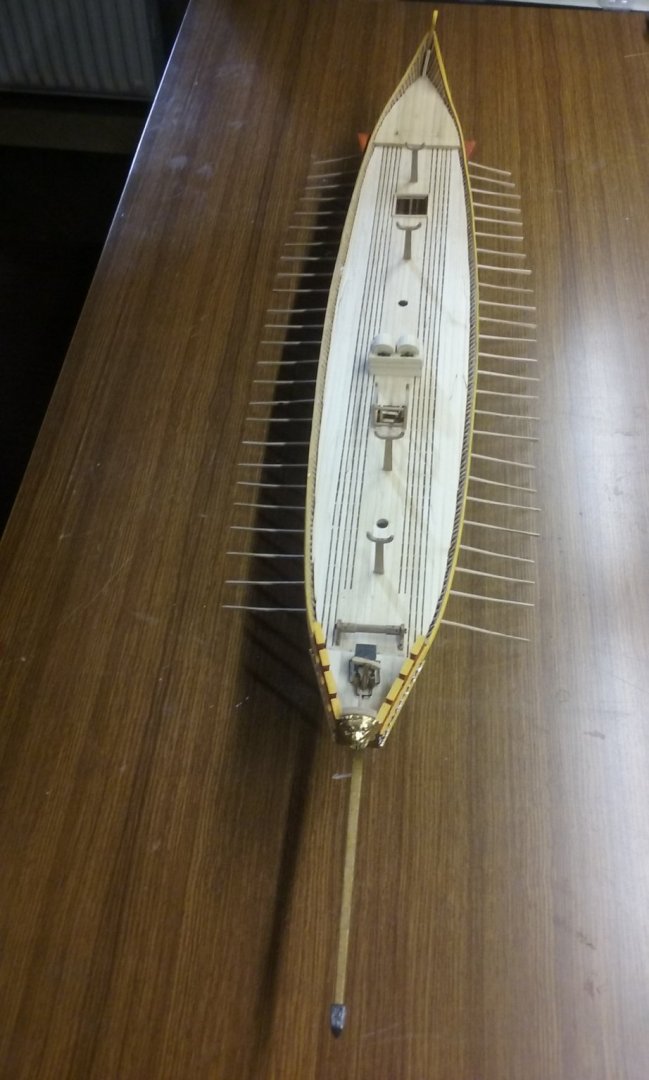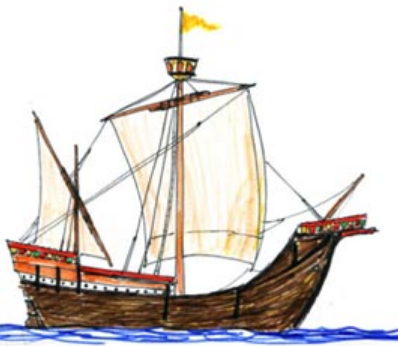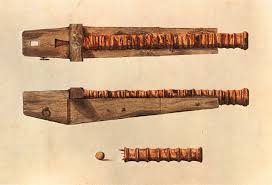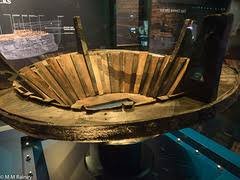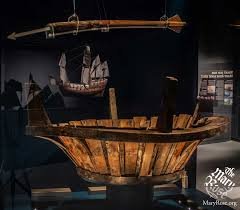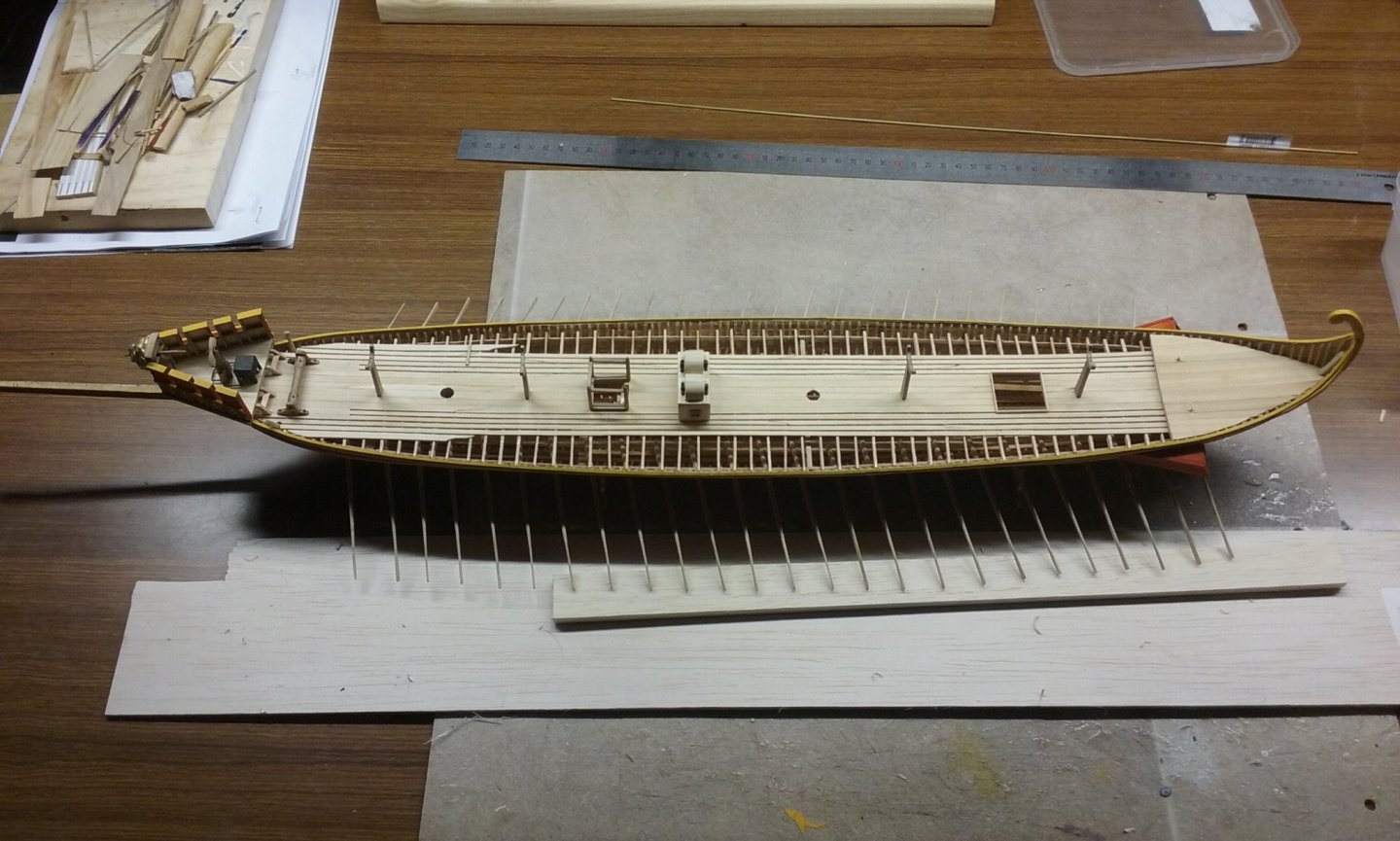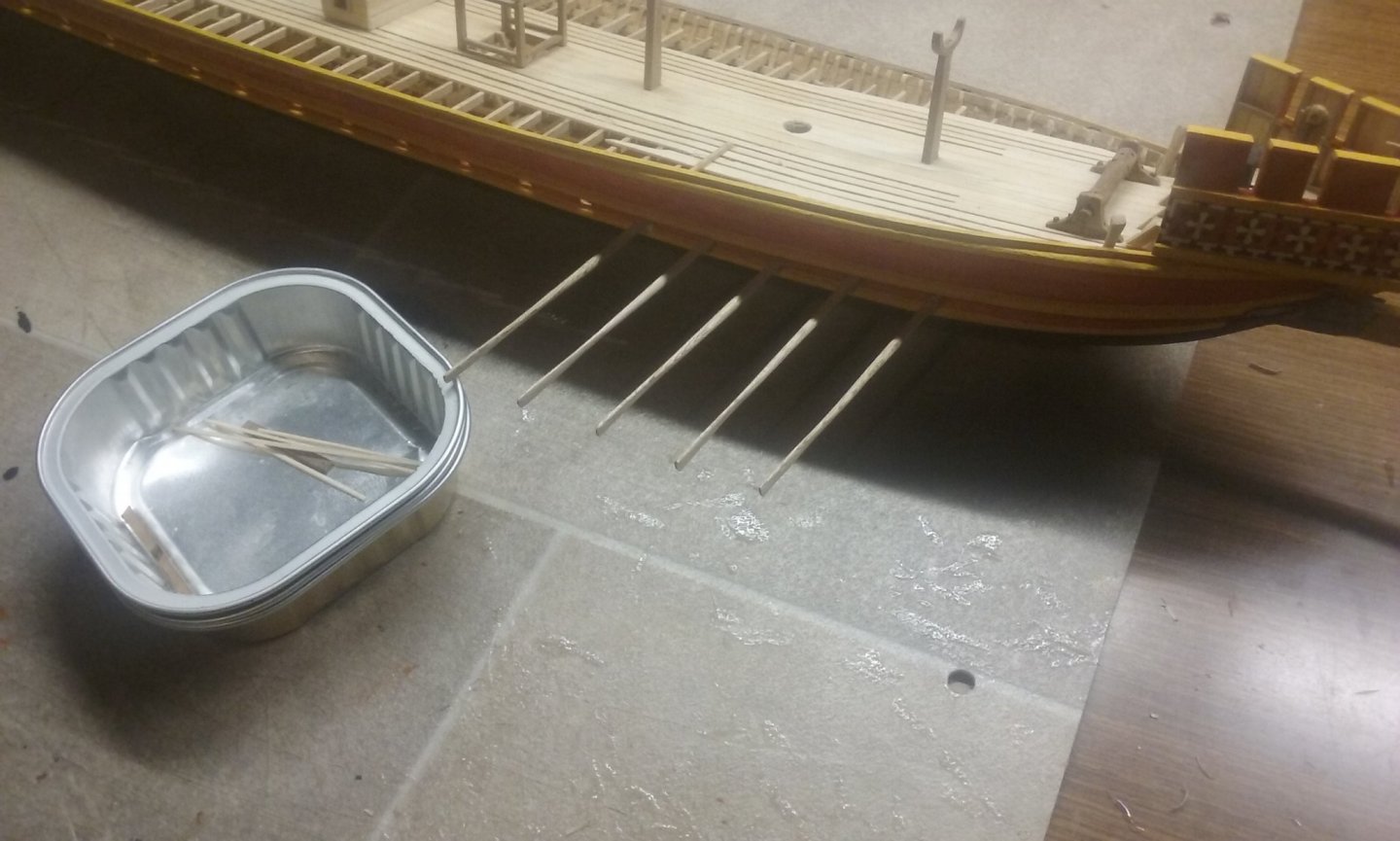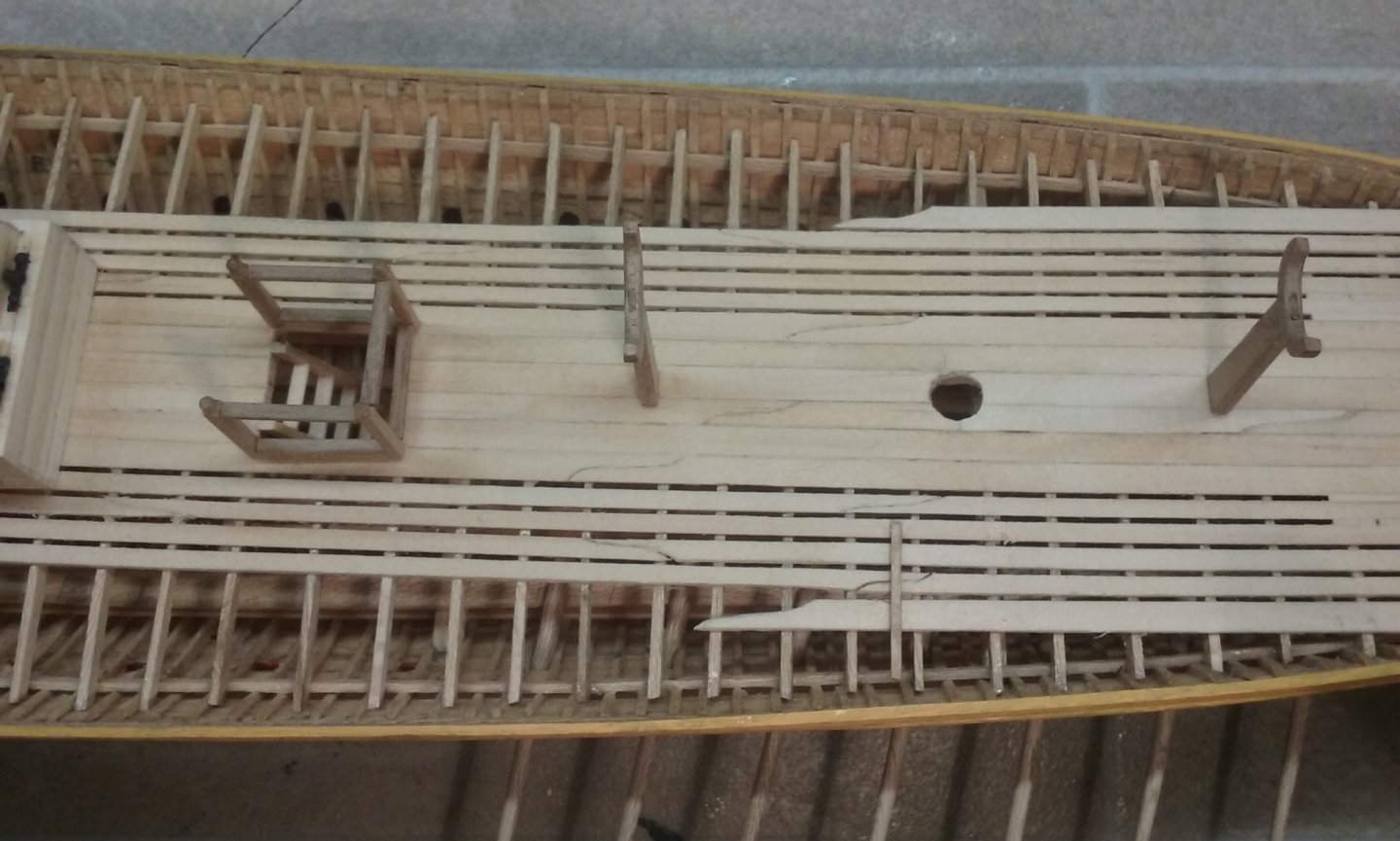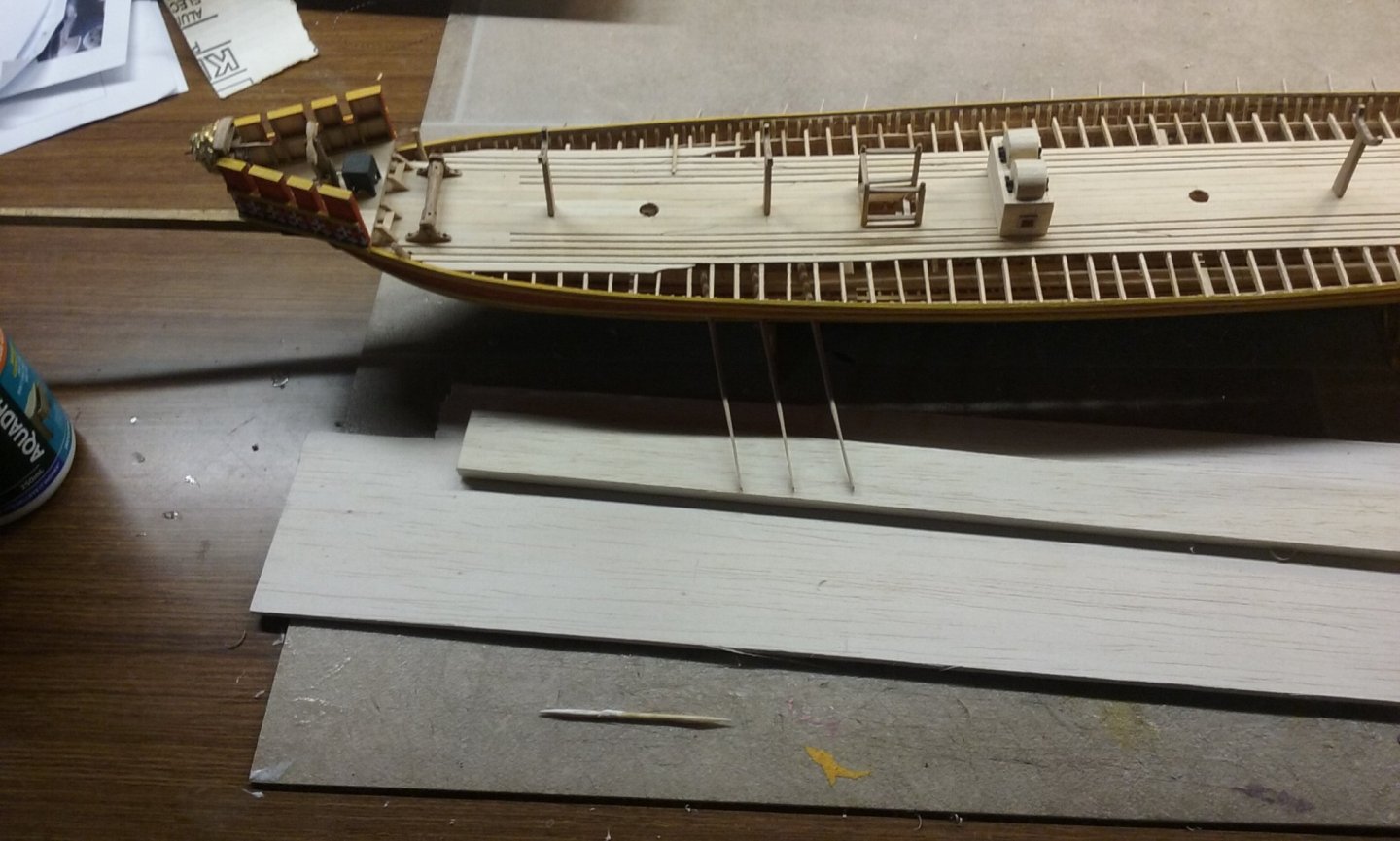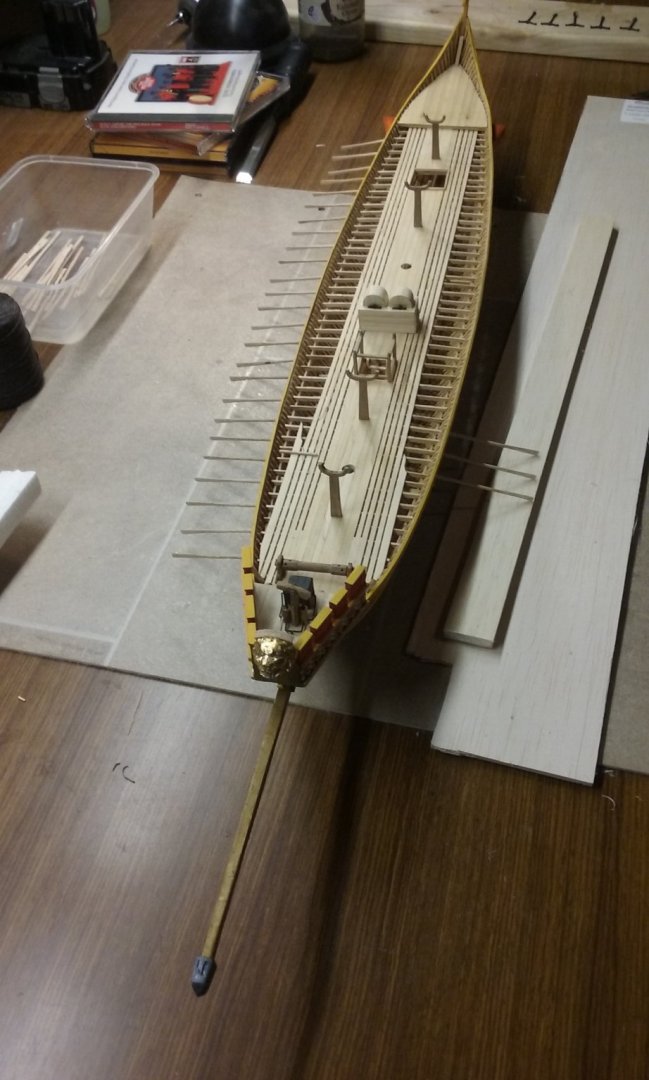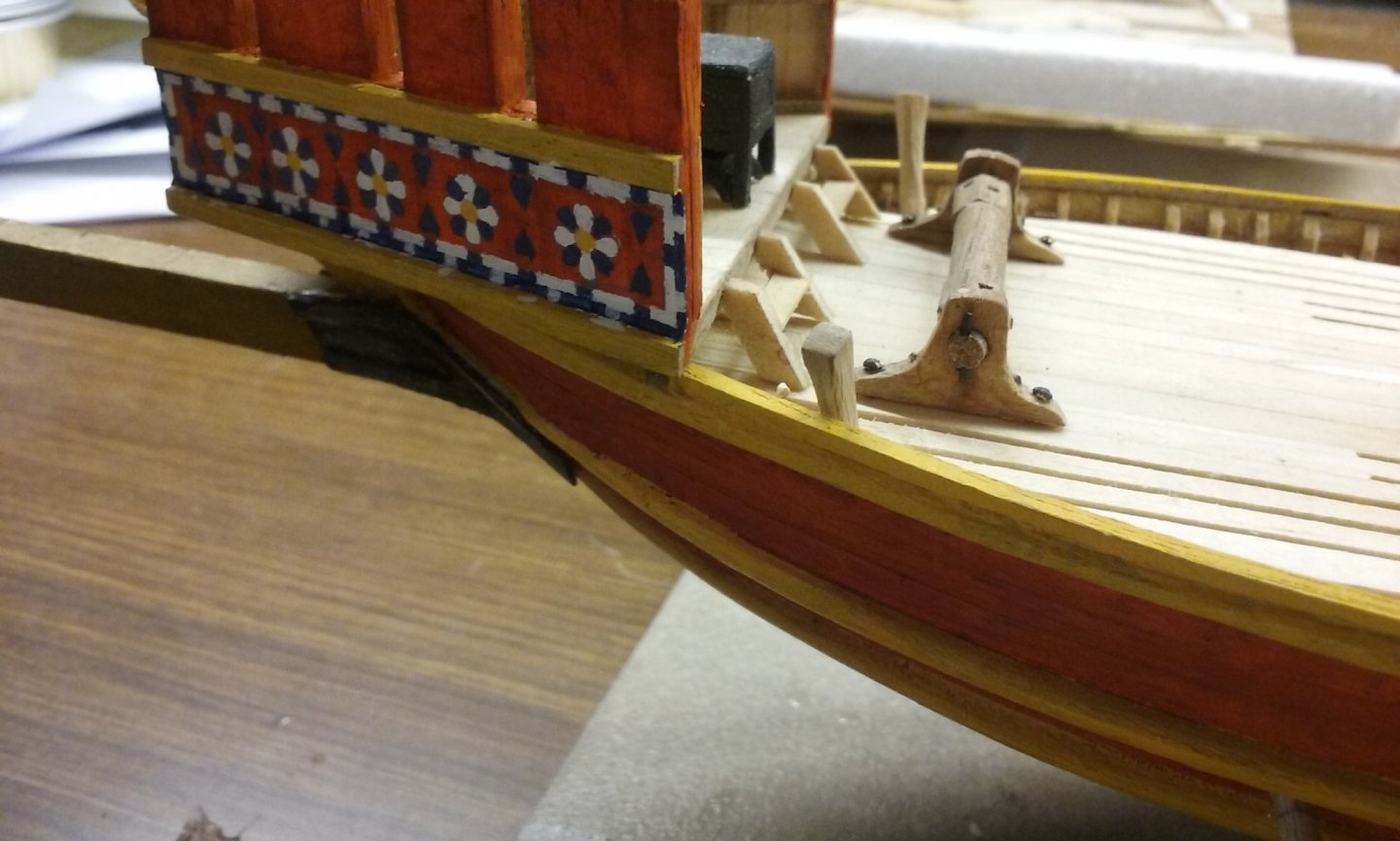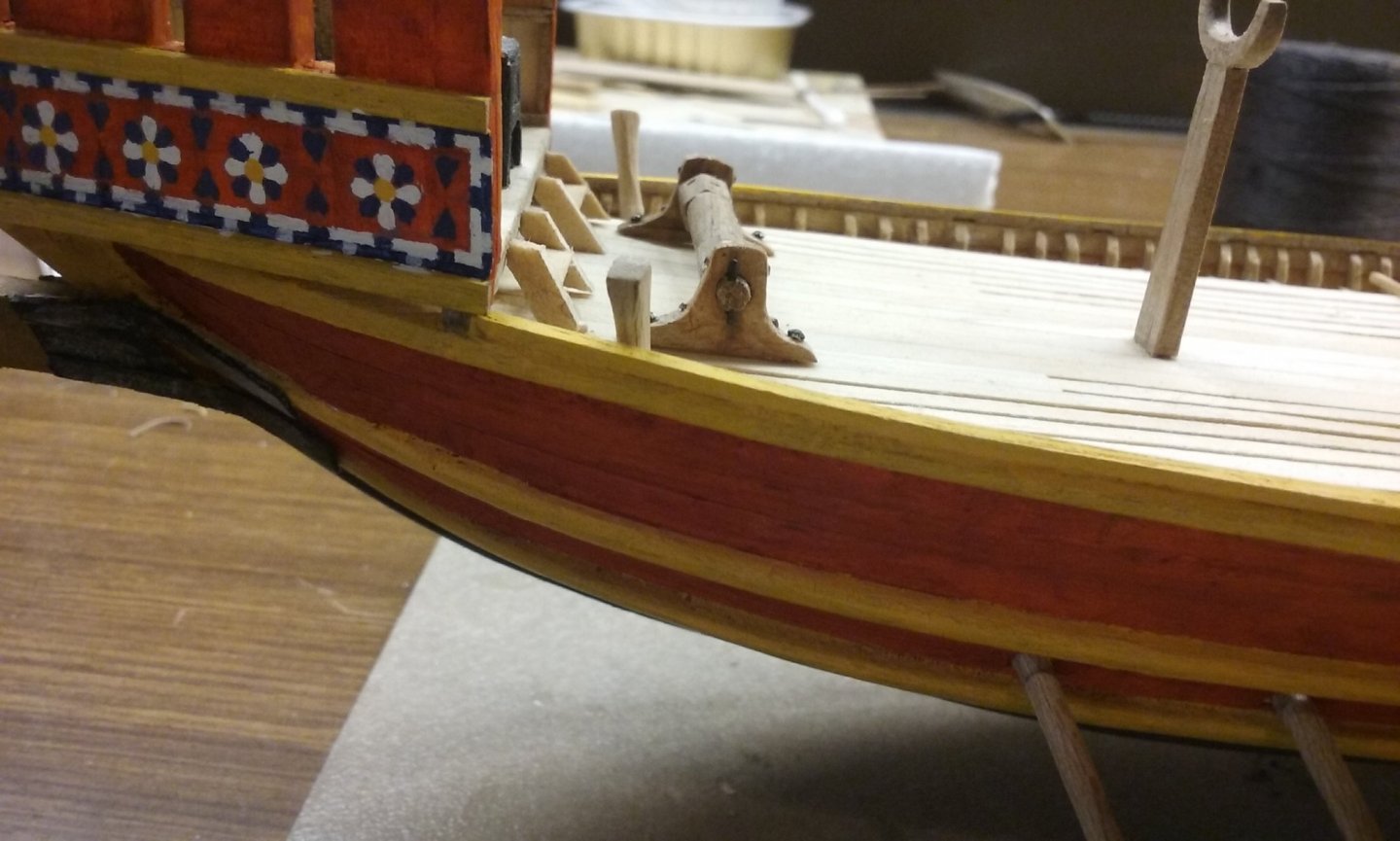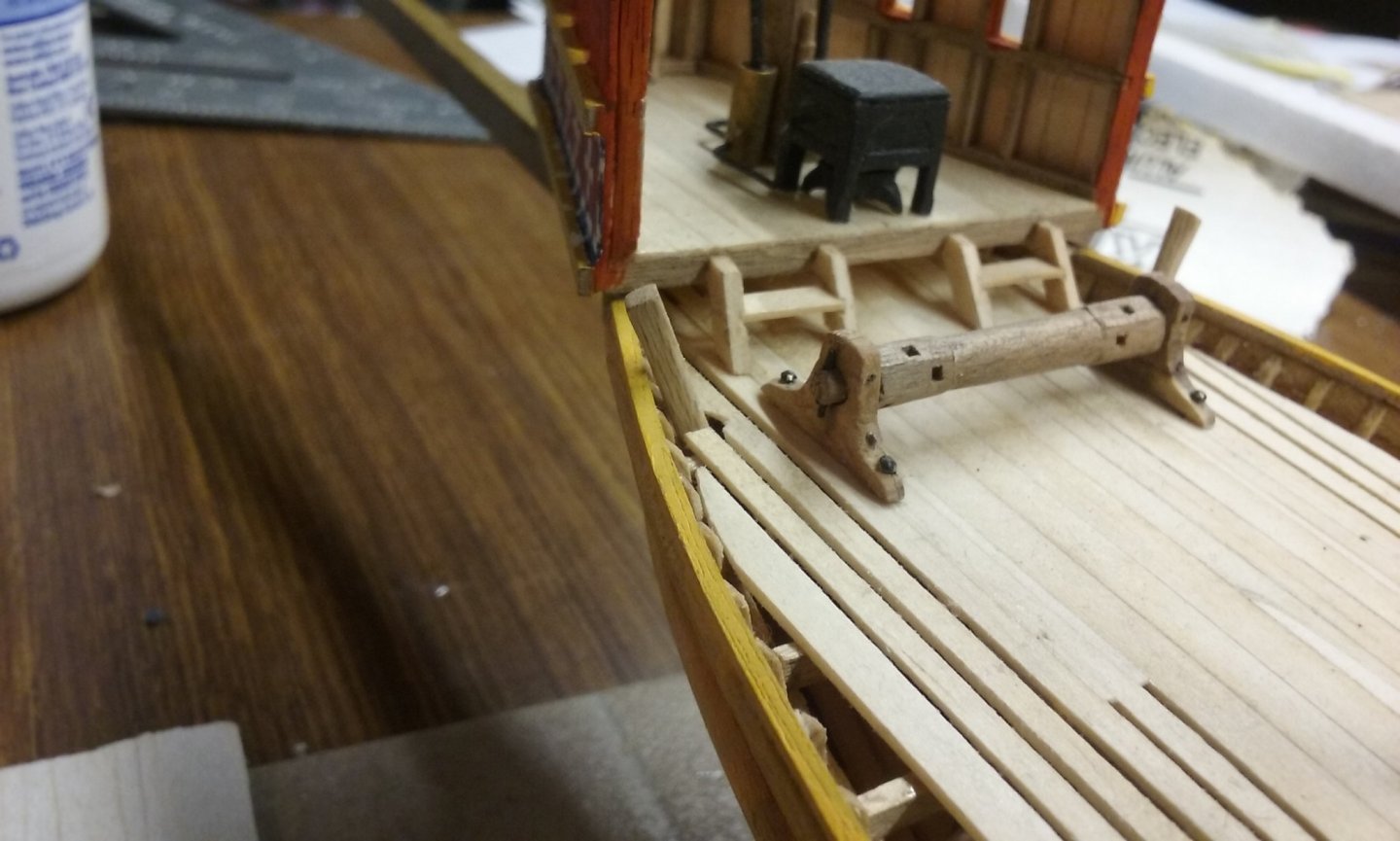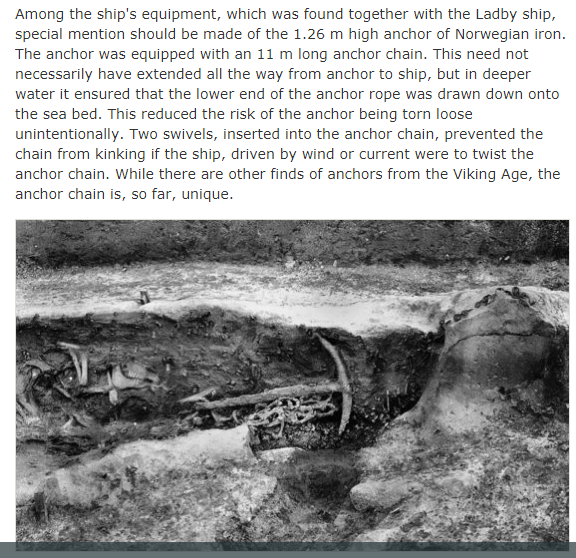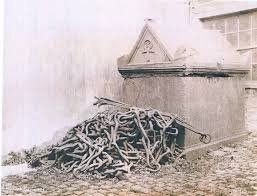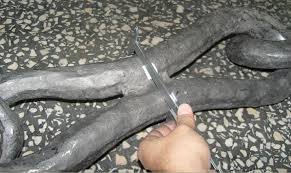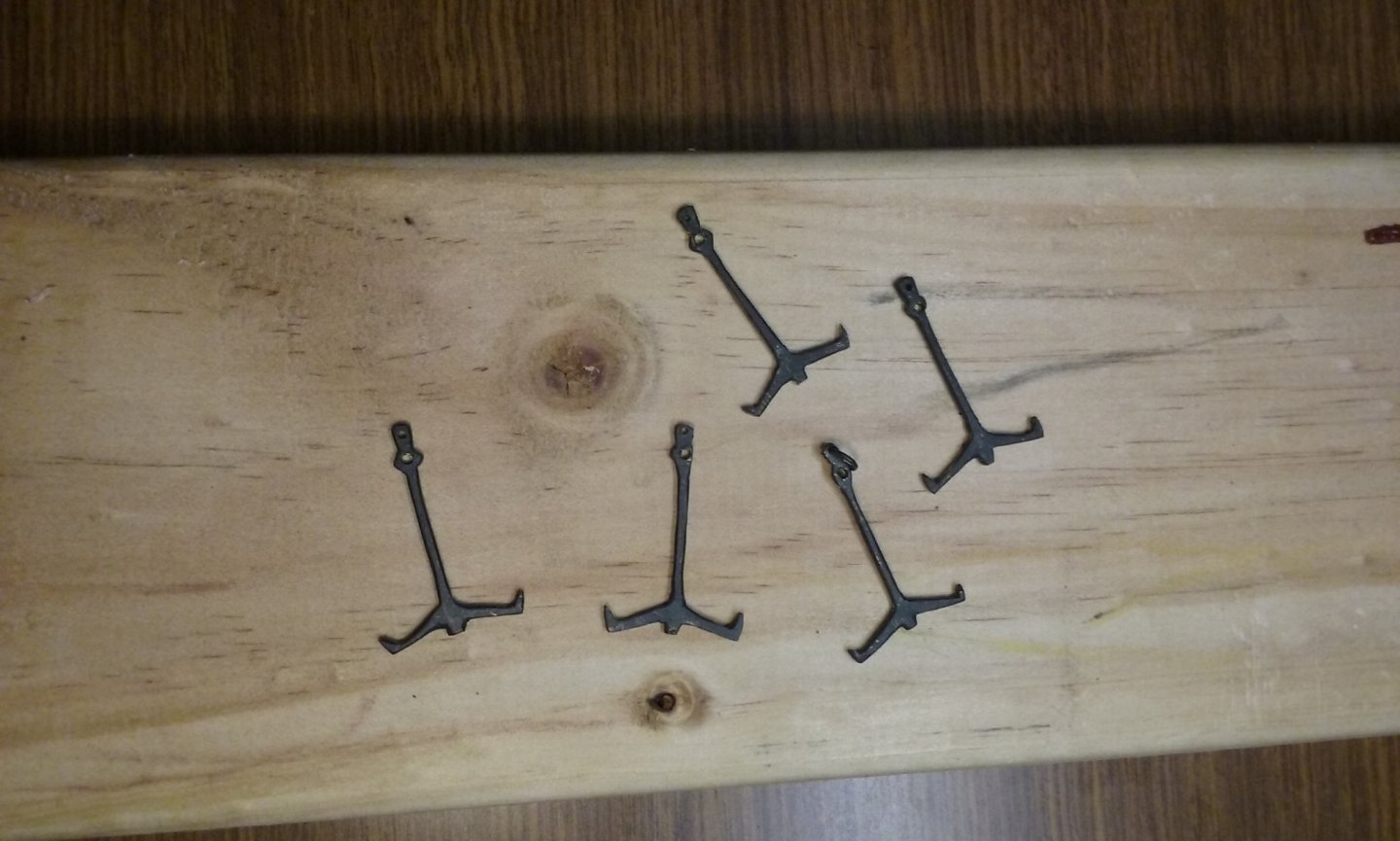-
Posts
7,986 -
Joined
-
Last visited
Content Type
Profiles
Forums
Gallery
Events
Everything posted by Louie da fly
-
Thanks, GrandpaPhil. Pat, yes I'd thought of that and it is still a consideration, but it seems to me that if there was a heavy rain or big waves (though rough seas would be strenuously avoided as endangering a ship so inherently unseaworthy - lots of incidents of whole fleets of galleys being sunk by storms) the "gratings" in the centre (my solution to the lower oarsmen's need for lots of air if they were to function efficiently) could be covered with tarpaulins. As they tried to beach the ships every night if at all possible, to renew their water (oarsmen sweat a lot and need to drink a lot of water), they could pull out the bung and drain what water had accumulated in the hull. But they'd still want to avoid having to pump out more than absolutely necessary in between times, so they'd try to keep water from running down between the deck and the sides of the ship from the effects of spray. This is all highly theoretical of course, based purely on speculation on my part and I've no idea if that's what they really did. But till some archaeologist finds a dromon (maybe in the Black Sea?) who's to tell me I'm wrong? Anyhow, I've put in the waterways and they look pretty good. And now I've finally been able to start putting in the benches for the upper oarsmen. Steven
-
Thanks, Michael. Mark, I thought of doing that and it still might be what ends up happening. But that involves a lot of fiddly work (there's over 180 gaps to be filled). If instead I add inner planking, it would overlap the gunwale from underneath so I could extend the gunwale sideways (inwards) with another stringer which should (if I do it right) merge with the gunwale so they look like the same piece of wood. Here's hoping. Steven
-
Thanks for all the comments and likes. Mark, thanks for your comment, but I am very aware this model isn't "museum quality". With an undetermined number of years of extra experience I might one day aspire to that kind of level - if I ever do - but it's certainly not now. Having glued in the lower bank of oars, I've now been free to complete the deck. Those little clothespegs are very useful, but of course towards the edges there's no longer any room for them, so I had to weigh the last few planks down with whatever came to hand. It seems to have worked. Now to sand down the deck to make all smooth. Then I have to face a problem I've been avoiding up till now. The original galley wrecks found at Yenikapi in Istanbul were single-banked and didn't have a deck. Accordingly they didn't have an inner planking - the inner sides of the frames were left open. There wasn't any need for an inner planking or a waterway to keep water from seeping down between the outer edge of the (non-existent) deck and belowdecks. Unfortunately this is not the case with the dromon, and I've been debating with myself whether to install inner planking at least above deck level, so there isn't a gap in the decking between the frames and the side of the ship. But if I do, the "wall" of the hull will be thicker than the gunwale is wide. So - do I add another stringer at the inner edge of the gunwale, so the planking doesn't overlap (or is that underlap) the gunwale? I think I have to. Decisions, decisions . . . Steven
-
Not at all, Safetman. In fact I agree with you that the forecastle on the Mary Rose was probably a hangover from the era of high forecastles designed as archery platforms, but among the last of them - soon to be superseded by the lower forecastles of the galleons which were already in use by the time she sank. And who knows? Perhaps they will find the remains of the forecastle after all. As I understand it, it's a matter more of finding the necessary funds to keep searching than anything else. I live in hope. By the way, given that nothing of the upper hull survives, the Time Team (or is Timewatch a separate programme?) statement of the Grace Dieu's forecastle height above waterline is probably based on a report of the time by the Florentine captain of galleys Luca di Masa degli Albizzi who I believe (if I could find my records) stated that her "prow rose more than 50 feet". Modern reconstructions that try to marry up this enormous forecastle with the length of the ship (admittedly 218 feet - about as long as the Victory!) end up looking quite bizarre and out of proportion: But as Albizzi also stated (if I recall correctly) the mast was 200 feet high, I do wonder how reliable his description is - did he take out a tape measure and check the dimensions? Or do "50 feet" and "200 feet" just mean "a helluva lot"? Steven
-
Not even a whipstaff - they don't seem to have come in until the 17th century. Which makes it a bit baffling - did they really just yell down to the helmsman which way to steer (because he couldn't see from where he was)? Chidokan, be a bit cautious with how far past the front of the carriage those "built-up" guns stick out - the watercolour from the 19th century recoveries shows the barrel only sticking out a short way - which is understandable - the barrel wouldn't have had all that much structural integrity and cantilevering it too far out without support would have imposed unnecessary forces on it. I envy you having your built-up barrels ready made; I had to make all mine by hand - not an easy job. It's a bit of a shame your pic of the fighting top didn't come out too well, but I found some good ones by doing a Google image search, which I hope are of use to you: Safetman, the Grace Dieu was from Henry V's time not Henry VI, launched in 1418, so over 100 years before the Mary Rose and the Henry Grace a Dieu (unfortunately the names are a bit confusing). However, your comments are still valid regarding the forecastle being a high platform for archers - that still hadn't changed by Henry VIII's time, though his two ships were probably among the last to be built that way, as firearms were in the process of making longbows obsolete. Steven
-
"I've had worse . . . "
-
Keep in mind also that the Mayflower wasn't a new ship in 1620 - the first mention of her is in 1609 - she was what the pilgrims could afford - the main (deck?) beam broke in a storm on the trip over and had to be supported by a "great scrue" - (several accounts interpret this as the screw of a printing press, while others claim it was a "jackscrew" intended for use in the construction of houses). Steven
-
Actually, the people he upset were the corrupt officials and landowners and members of the New South Wales Corps - the so-called Rum Corps, supposedly tasked with maintaining order in the penal colony but effectively gathering all power to themselves and their friends - "under the command of Major George Johnston, working closely with John Macarthur, deposed the Governor of New South Wales, William Bligh. Afterwards, the military ruled the colony, with the senior military officer stationed in Sydney acting as the lieutenant-governor of New South Wales until the arrival from Britain of Major-General Lachlan Macquarie as the new governor at the beginning of 1810." (https://en.wikipedia.org/wiki/Rum_Rebellion) The Rum corps and its ex-officers (such as Macarthur) had a very cushy position, having pretty much monopolised all the good land, kept the population in subjection, and bribery and corruption were rife. In the absence of a proper currency, rum (the production of which was under their control) was used as a medium of exchange. Bligh tried to stop the corruption but was was overthrown by a conspiracy of the Rum Corps. When Macquarie came out from England he brought in his own Scottish regiment, disbanded the Rum corps, introduced a silver currency taken from Spanish coinage (a disc was cut from the centre of each coin - the central disc being one value and the remainder, called a "holey dollar" was a different value. It was in his term of office that the colony really got properly established on a firm footing. Steven
-
Thanks everybody for the kind comments and the likes. Very much a learning experience, but I'm pretty happy with the way it's going. Steven
-
Been adding the lower bank of oars, one at a time - I had to wait till the glue dried on each before I moved onto the next, because a whole lot of oars with wet glue would be too hard to keep aligned without messing each other up. So here we go: To get all the oars at the same angle, I'd previously drawn parallel pencil lines on a long piece of wood below decks and aligned the oars to the lines. Note that the faithful cat-food container has again proved its worth: But I couldn't do it that way on the other side, so I came up with what turned out to be a better way. Steven
-
Thanks, Pat. It was very good to meet you at last after following your Victoria build for quite a long time and being very impressed with the quality of your work. Had a very good time just talking ship models. I'll be seeing you again for the Ship Model Society of Victoria meeting Wednesday week and I look forward to meeting the other members. Steven
-
Thanks, Kris - yes, the Yenikapi wrecks (along with prof Pryor's book Age of the Dromon) are the major source of information I've been using for my dromon model. All of the structure and much of the hull shape and details are based on the galley wreck YK2 and YK4 on pages 65-68. I've been in touch with Cemal Pulak who supervised these digs and he's been extremely helpful, answering questions and suggesting solutions to problems, and discussions of possible configurations for such things as the ramming spur at the bow, and the mast step (of which several have been recovered, but no-one's sure exactly how they worked). I've been amazed how helpful academics and archaeologists can be when a mere ship modeller gets in touch and asks for assistance. I think it's something to do with having a shared passion. Steven
-
Good point, Carl. The dromon has a sort of cathead called, if I recall correctly, a peribolos, which wouldn't stand up to a chain being repeatedly pulled up over it - that's assuming that my interpretation of the contemporary picture is in fact a peribolos, and that it works the way I've made it. So, it looks like I won't be using chain . . . . Steven
-
Good point, Carl. But with the anchors being so light ( the heaviest could probably be lifted by two people) it's likely they'd just pick it up chain and all and throw it into the sea. Maybe - a lot of speculation going on, I'm afraid. I'm not really fixated on having a chain. I'm just trying to work out whether it would be likely to have one, or just an anchor cable. If only on a linguistic basis, I'm still more inclined to go with just rope - the original Greek would better translated this way, and there are so many downsides to having a chain that I hadn't thought about but have been brought to my attention by this discussion. Steven
-
Hang in there, Kris. You're actually making progress and finding out what works and what doesn't. Even if it may be a little frustrating for the time being it will stand you in good stead in the future. We've all been there and you'll find that as you gain more experience you'll cast aside what doesn't work and spend more of you time doing what does. I still make a hash of cutting out and have to cut everything rather too big and then trim down with knife and sandpaper (or more often a file in my case - I just feel more comfortable with a fine file than with sandpaper). Steven
-
Absolutely beautiful work, Javier. Your wonderful, tiny models are always an inspiration. But I am interested in why you chose a scale of 1:210 rather than, say, 1:200. Steven
-
I wasn't aware that any Viking anchors had been found with chains attached, but Googling it I found the following at https://www.vikingeskibsmuseet.dk/en/professions/education/viking-knowledge/the-longships/findings-of-longships-from-the-viking-age/ladby/ : Fascinating and enlightening as this is, unfortunately this just further complicates the issue - should I use chain or not? Aaargh! Given that the whole idea of dromons having an anchor chain comes solely from Pryor's interpretation of a rather vague reference to "iron-throwing rope", I think I'm probably better off just using rope, particularly in light of the comments above, plus the fact that from among a fair number of Viking anchors found, the Ladby ship has the only example with a chain. However, there is an article in the Mariner's Mirror of 1963 - Vol. 49 No. 1 by Honor Frost entitled "From Rope to Chain - on the Development of Anchors in the Mediterranean" which may cast some light on the issue. Does anyone have access to this? Steven
-
On the other hand, the making of chains was certainly not beyond Byzantine technology. The entrance to the Golden Horn harbour in Constantinople was closed by a massive chain to keep enemy ships from entering. The chain was on a roller and could be slackened off in peacetime to allow the harbour to be used. That being said, that chain was at the limit of technology and the provision of anchor chains to individual ships could not be quality controlled to anything like the same degree. Steven
-
Thanks for the likes and the encouraging comments (though what I see when I look at these anchors is the bits I got wrong . . .) The next thing to make for the anchors is the wooden stocks. One is already done - 4 more to make. Steven
-
Yes, Christos. The more I read and the more I think about it, the more I think you're right and that I should be using rope rather than chain. The fact that the word "iron" (sidero-) in schoinia siderobola is part of the combined word "siderobola" rather than standing by itself or being combined with "rope" (schoinia) indicates to me that it's not the rope that's made of iron, but the thing which is thrown - the anchor. So perhaps it should better be translated as "iron (anchor)-throwing rope", or just "anchor cable". Speaking of throwing-irons, here they are painted matt black so they look like iron instead of brass. I think they look pretty good. Steven
-
Makes sense - though isn't the Mediterranean tideless? However, Mediterranean storms can be very fierce and unpredictable - anchors fixed into the beach would help guard against them. Steven
About us
Modelshipworld - Advancing Ship Modeling through Research
SSL Secured
Your security is important for us so this Website is SSL-Secured
NRG Mailing Address
Nautical Research Guild
237 South Lincoln Street
Westmont IL, 60559-1917
Model Ship World ® and the MSW logo are Registered Trademarks, and belong to the Nautical Research Guild (United States Patent and Trademark Office: No. 6,929,264 & No. 6,929,274, registered Dec. 20, 2022)
Helpful Links
About the NRG
If you enjoy building ship models that are historically accurate as well as beautiful, then The Nautical Research Guild (NRG) is just right for you.
The Guild is a non-profit educational organization whose mission is to “Advance Ship Modeling Through Research”. We provide support to our members in their efforts to raise the quality of their model ships.
The Nautical Research Guild has published our world-renowned quarterly magazine, The Nautical Research Journal, since 1955. The pages of the Journal are full of articles by accomplished ship modelers who show you how they create those exquisite details on their models, and by maritime historians who show you the correct details to build. The Journal is available in both print and digital editions. Go to the NRG web site (www.thenrg.org) to download a complimentary digital copy of the Journal. The NRG also publishes plan sets, books and compilations of back issues of the Journal and the former Ships in Scale and Model Ship Builder magazines.



